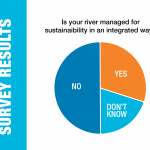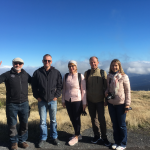
22 Mar The Human Waste Problem
“Kailasho, O Kailasho. Are you there yet? Why didn’t you come in yesterday?” These were the voices of my waking up as child in our family’s home in the town of Meerut, in western Uttar Pradesh state of India. My locality didn’t look much different from the lane in the picture above and this could might as well be a scene from one of those mornings. So who was this Kailasho?
I come from the highest caste of Brahmins in India. India has always been a caste-based society, historically divided into Brahmins (the priests), Kshatriyas (the warriors), Vaishyes (the traders) and Shoodraas (the untouchables). Growing up I saw Kailasho who was our sweeper, and her family come in every morning to clean our household latrines. It was considered a ‘dirty’ chore for my family members. These latrines were located outside our main house, so that Kailasho and her family didn’t have to enter or see our main living space.
I was adopted and brought up by a grandparent, who abhorred this practice. He cleaned his own latrine everyday, and taught me to do the same. He explained to me how ridiculous the idea of caste system was, and how our abolishing this practice, as an entire society, was long overdue. This led me to think long and hard about the type of jobs that people were ‘supposed’ to do based on their castes in India, and how I could contribute towards making a difference and bring about change, via my developmental work.
Sadly, from India all the way to Kenya, the practice of manual scavenging, as the dirty clean-up work is called, is still fairly common. Despite the practice being banned since 1993 in India, the news of sewer deaths are not rare. In addition to loss of human life, the untreated sewage poses myriad threats to drinking water quality, human health and the environment. In Kenya, more than half of the urban population lives in informal settlements like Kibera, which houses about 250,000 people. The waste they generate flows untreated into the Nairobi river, which ultimately finds its way into the Indian Ocean. This is a similar case of most Indian rivers, Ganga/Ganges, Yamuna, Hindon, Kali and others, to name a few.
Globally, almost 80 percent of the world’s wastewater flows back into the ecosystem without proper treatment. This means that almost a quarter of people drink water contaminated with human waste, according to United Nations Water. That incubates deadly diseases, including cholera, dysentery, typhoid and polio.
March 14 was the International Day of Action for Rivers and March 22 is World Water Day with ‘Leave No one Behind’ as the slogan for 2019. Only by addressing these challenges, providing solutions and gainful employment to the service providers, we can work towards achieving the SDG 6-Clean Water and Sanitation for All and #leavenoonebehind.
Written by Pallavi Bharadwai
Disclaimer: This article originally appeared on Engineering of Change‘s website, under the title ‘There’s a Better Way to Manage Human Waste’ , and has been edited for the ease of reading for all.
Image credits: Rajan, a resident of Lucknow in the Indian state of Uttar Pradesh, carries buckets of refuse from latrines he cleaned. Rajan, of the Valmiki caste, is from a family of scavengers and inherited his job at age 14. | Sharad Prasad (CC BY 2.0)







Sorry, the comment form is closed at this time.